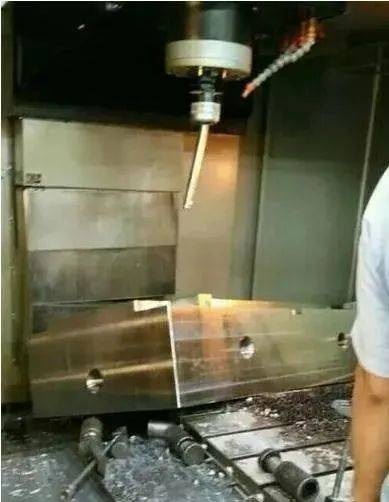Three practical lessons learned from CNC machine collisions—keep crashing!
From a machining process perspective, CNC machine tool processing can be divided into three major modules: programming, tool setting, and automated machining. Programming and tool setting are preparatory tasks for machining operations. Correct programming, appropriate cutting parameters, and accurate tool setting parameters are all reflected in actual machining. Therefore, to ensure the accuracy of CNC machine tool operations, trial runs are often performed to verify whether there are any problems with automated machining. During trial runs, strictly adhering to the “three checks, two musts, and one stop” processing guidelines can significantly reduce collisions during machine tool operation.
1. Three checks
First, check the program. All CNC machine tool operations are controlled by program instructions. By examining program statements and program names, problems can be identified and corrected promptly. When checking a program, to avoid duplicate checks or missed checks, a specific inspection sequence should be followed: First, check the program name. Because basic CNC operations require numerous program instructions, numerous program files are stored within the microcontroller system. When automatically calling up a program name, pay particular attention to the program name suffix and format. Second, check the program fragment. Use computer software simulation to check for errors in specific program statements. If there are logical problems with the statement, the simulation software will automatically identify the issue, allowing the programmer to make timely program modifications until the program is correct.
Second, check the workpiece coordinates. The screen displays detailed information such as the current tool’s machine coordinates and workpiece coordinates. When checking, be sure to compare the displayed values with the actual tool tip position to ensure a one-to-one correspondence. Due to factors such as machine fixtures and tool wear, workpiece coordinates often have certain errors. If the error exceeds the standard range, it will affect the machine tool’s processing progress and cause collisions. Therefore, comparing the workpiece coordinates can effectively avoid this problem.
Third, check the tool tip position. Machining and cutting operations on CNC machine tools are performed by the tool. Therefore, during machine inspections, the position of the tool tip should be carefully monitored. Tool tips wear over time. Without compromising machining quality, machine operators should regularly adjust the tool position to prevent collisions with the workpiece or chuck. Furthermore, the actual tool tip position should be compared with the displayed data on the screen. If there is a significant discrepancy between the two, machining should be stopped, the tool removed, and reinstalled and adjusted after the machine is shut down.
Xinfa CNC tools have the characteristics of good quality and low price. For details, please visit:
CNC Tools Manufacturers – China CNC Tools Factory & Suppliers (xinfatools.com)
Secondary Requirements
First, single-block execution is essential. CNC machine tools all feature single-block (SBL) execution. When this function is enabled, the microcontroller automatically terminates machining operations after completing each control program, requiring the operator to manually start the next program before machining can resume. The advantage of single-block execution is that it provides the operator with ample time for inspections, including tool checks, coordinate checks, and program checks, thereby significantly reducing collisions. Although single-block execution reduces CNC machine tool machining efficiency, it significantly improves machining quality and avoids collisions, resulting in better overall machining results. Second, use a low magnification. By adjusting the CNC machine’s speed knob to reduce the tool feed rate, you can observe whether the tool tip position matches the coordinate display before machining the workpiece. If the two values are inconsistent, the machine can be shut down immediately to avoid collisions. This is especially true when machining inner holes. Feed or retract errors are common, affecting not only the machining quality and causing significant deviations in the workpiece’s internal hole dimensions, but also tool jams and collisions. Therefore, selecting a low magnification machining speed can effectively avoid these machining issues.
3. One Stop
To be more precise, multiple pauses should be used during automatic machining. These pauses allow the operator to mentally monitor and compare the tool tip position with the coordinate display on the screen. Especially if chips are wrapped around the workpiece or tool, the cycle stop button can be pressed. This time can be used to resolve any CNC machine tool issues and prevent errors caused by panic.
Post time: Jul-29-2025




